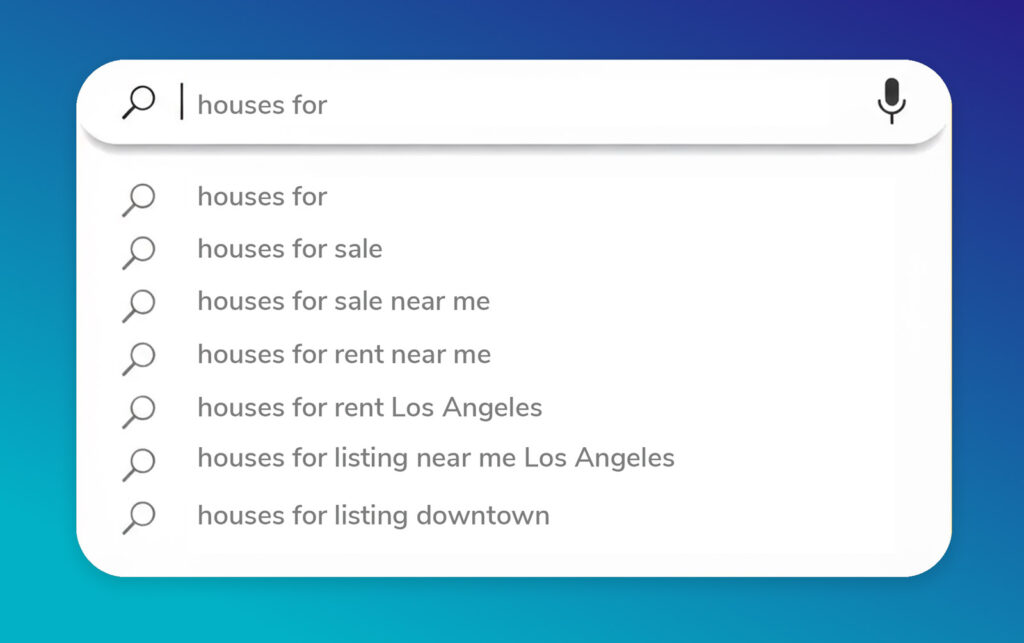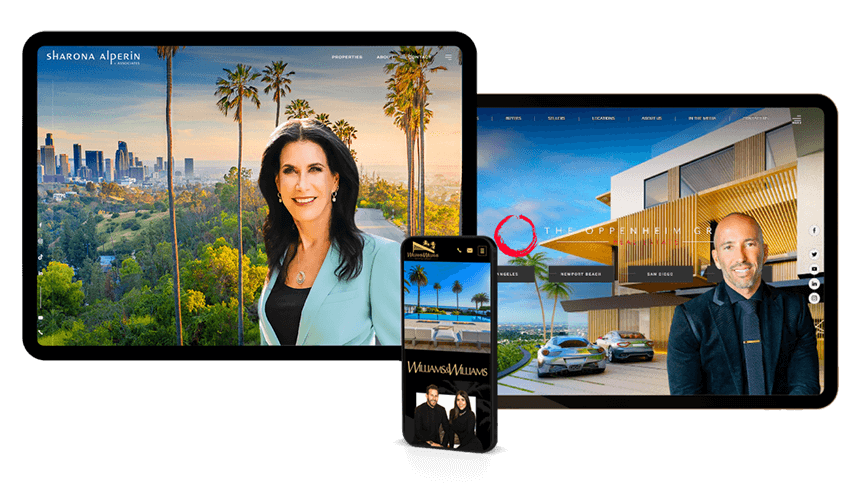How to Market Properties to First-Time Homebuyers Online
First-time homebuyers are one of the most promising—and most misunderstood—segments of today’s real estate market. They’re excited about achieving the dream of homeownership but are often overwhelmed by the process. That means agents who know how to educate, support, and connect with them are positioned to build lasting client relationships.
Let’s break down how you can market properties in ways that truly resonate with first-time buyers.
Table of Contents
Elevate your site. Engage the right clients.
Outdated design can hold you back.
A refresh helps you connect with the clients you’re looking for.
Understanding First-Time Buyer Search Behavior
Millennials and Gen Z make up the majority of first-time buyers today. These digital natives rely on online research long before they reach out to an agent. They turn to search engines at 2:00 a.m. with questions like “What is a down payment?” or “How much do I need to save for closing costs?”
Because of this, content becomes your first impression. Buyers are not only looking for property listings. They want answers, reassurance, and clarity. They crave simple explanations of complex terms, guides to financing options, and insights on what to expect at each stage of the process.
Content Marketing that Works
Traditional real estate marketing showcases listings and achievements, but first-time buyers need education, not promotion.
-
Create educational content. Blog posts about saving for down payments, understanding loan types, and navigating pre-approval may not seem glamorous, but they attract qualified traffic from serious buyers.
-
Use video to build trust. Video content works exceptionally well with this demographic. Create series that walk viewers through the process step-by-step: Show what happens at closing, explain home inspections, or break down mortgage options.
-
Share tips on social media. Platforms like Instagram and TikTok are where many first-time buyers spend their time. Sharing quick, practical advice there keeps you top of mind.

When you meet buyers where they already are—online and on their phones—you build trust long before they’re ready to reach out directly.
-
Nurture through email. Monthly newsletters featuring market updates, buying tips, and local program information will nurture relationships for months before buyers are ready to engage directly.
-
Offer valuable resources. Provide checklists, program directories, or mortgage comparison worksheets in exchange for contact info. Keep them genuinely useful (buyers can tell the difference between thin content and real value).
-
Build targeted landing pages. Create dedicated pages for common concerns, like local down payment assistance programs or buying with limited income.
Also: always track performance! Monitor which content generates the most engagement and leads. Double down on what works while refining less successful approaches based on your analytics.
High-Value Niche Markets
Not all first-time buyers look the same. Some segments represent particularly strong opportunities:
-
Veterans. VA loans require no down payment or mortgage insurance, which makes them a powerful entry point into homeownership. These buyers are often highly motivated and represent strong long-term client value.
-
Low- to moderate-income buyers. USDA loans and state-specific programs create opportunities for affordability. Highlighting these pathways differentiates you as a resourceful guide.
-
Life stage buyers. Renters with growing families, newlyweds, or recent graduates often don’t realize how close they are to buying. Proactive outreach to these groups pays off.
Agents who understand these niches and can connect buyers with the right programs quickly earn trust.
Essential Tips for First-Time Home Buyers (that Agents should Know)
To effectively market to first-time buyers, you need to understand their primary concerns and address them proactively in your marketing materials.
-
Financial preparation
Plenty of first time buyers do not have a grasp of the true costs of homeownership beyond the down payment. As their guide, you can create content explaining closing costs, ongoing maintenance expenses, and potential hidden fees. Use real local examples to make these concepts concrete and relatable.
-
The pre-approval process
What’s the difference between pre-qualification and pre-approval? Why is pre-approval crucial in competitive markets? Educational content that demystifies this process will make you an invaluable resource.

Successful marketing to first-time buyers means addressing their biggest concerns upfront, from financial prep to understanding pre-approval.
-
Market competition
First-time buyers often worry about how they can compete with more seasoned buyers. Show them strategies that strengthen their offers without requiring all cash or large down payments. Simple approaches like personalized buyer letters, flexible closing timelines, or covering certain closing costs can make a big difference.
-
Technology integration
First-time buyers love when the process feels easy. Virtual tours, e-signing, and quick replies by text or email show them you’re keeping things simple and stress-free.
-
Location-specific guidance
New buyers don’t always know the ins and outs of a neighborhood. When you share tips about schools, amenities, or future plans, it gives them confidence and shows you’re truly looking out for them.
Down Payment Assistance Programs
For many first-time buyers, the biggest hurdle isn’t qualifying for a mortgage, but saving for the down payment. That’s where down payment assistance (DPA) programs come in.
-
Grants and forgivable loans. Many state and local housing finance agencies offer down payment assistance grants or forgivable loans that don’t need to be repaid if the buyer remains in the home for a set number of years. These programs vary widely across the U.S., and guides like The Mortgage Reports and Rocket Mortgage provide helpful breakdowns of eligibility and program types.
-
National resources. To make navigation easier, tools like Down Payment Resource aggregate federal, state, and local programs so both buyers and agents will quickly identify available assistance options.
Getting to know these programs helps you become a trusted guide for first-time buyers.
It’s time your brand looked the part
You’ve built your reputation. Now create a digital presence that matches it.
Frequently Asked Questions
On average, the home-buying process takes about four to five months once buyers begin actively searching. For first-time buyers, though, the relationship often starts earlier: many will reach out while they’re still saving, researching, or trying to understand the process. Providing educational resources during this stage helps build trust, so when they’re ready to make an offer, you’re the agent they already rely on.
Include affordability calculators, down payment estimators, and comprehensive resource libraries. Valuable downloads like first-time buyer checklists offered in exchange for contact information help agents to start nurturing relationships early in the buyer's journey.
Pay attention to which blog posts attract the most readers, how often people open and click your emails, and whether your guides or resources are turning into new leads.
Make Your Website Work for First-Time Buyers
A professionally designed website optimized for first-time buyers can dramatically increase your lead generation and establish you as the go-to agent for new buyers in your market.
Ready to transform your approach to first-time buyers? Call 800.979.5799 or schedule a free consultation to discover how Agent Image can help you build a website that educates, engages, and converts first-time homebuyers into loyal clients.




